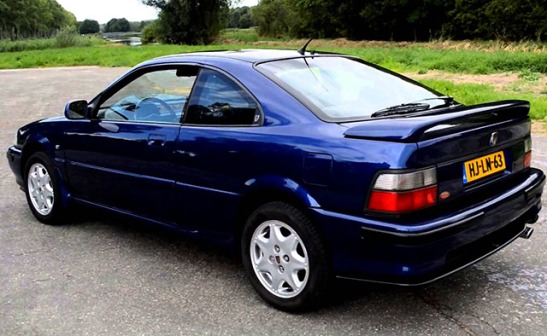1992-1995 Rover 220 Coupe Turbo – Better Late Than Never
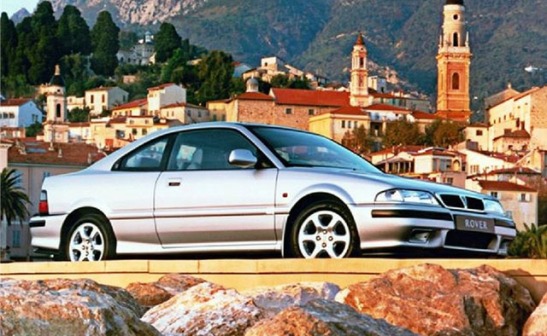
92 Rover 220 Coupe Turbo
Rover isn’t a brand that evokes much emotion or thought in America. Few remember the Sterling (800 in Britain), a midsized luxury sedan made in partnership with Honda. Unfortunately the Sterling was more Rover than Honda which proved to be a disaster. Rover’s reputation for poor quality and spotty availability in American went back as far as the 1970 when the 2000 and 350S’ were sold there. The Sterling was Rover’s nail in the coffin in America. It’s only legacy here was a 1/64 scale Matchbox toy (which sold more than the actual car).
That was over 30 years ago and since then Rover has set aside its Anglo pride and learned much from Honda. Ironically, the two were building great cars in Britain that would never see the dry docks of America.
Of the many models that were spawned off of some Civic-related platform, the 220 Coupe Turbo might be the most interesting. The 220 Coupe was Rover’s top of the 200 range sporty coupe for most of the ’90s. It came in 1.6 and 16 valve 2.0L versions that were turbocharged and normally aspirated. In preparation for its most powerful production model, a specially prepared Rover Coupe Turbo called Project Tomcat achieved a 24 hour world endurance land speed record at Middlebrook in 1992.

220 Coupe Turbo with T bar roof removed
The work paid off as the Coupe Turbo in production form with its 197 hp T-Series engine was Rover’s fastest car ever (the limited production Rover 420 GSi sedan also used the same engine). As such it was in its element on long high speed highway jaunts. With straight line performance closer to the Escort Cosworths than the Honda Civic Sir. At just 2612 pounds, a 5MT equipped Coupe Turbo could reach 150 mph and get to 60 from 0 in the low 6 second range.
Even with a Torsen torque traction control system, Rover never completely managed to tame the torque steer problem of having nearly 200 hp channeled through the front wheels. Despite marketing claims, the traction control was actually a limited slip differential (also used in the Audi Quattro and Lancia Delta Integrale).
The 220 Coupe range competed in a highly competitive market with everything from Honda’s own Prelude to the lower range of BMW’s 3 Series. Both versions of the 2.0 scored well in performance, although their tastefully restrained appearance might have betrayed the car’s performance potential.
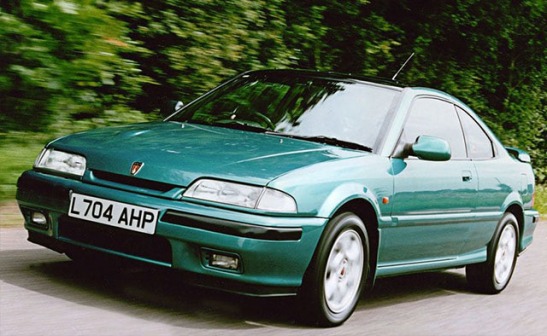
Most Rovers by this point resembled the Honda’s they were based on and the 220 Coupe was no different. Despite resembling a Honda, the 200 Coupe’s design was overseen by Gordon Sked in Canley, England. From an American perspective the 220 Coupe looked like a cross between the popular 6th generation Honda Civic coupe and the Acura Integra.
Overall it was a handsome design that retained a certain amount of Honda-like restraint. In front, the slim grille gave the coupe a refined somewhat upmarket look, like a flattened BMW kidney. The Turbo Coupe featured a front end devoid of bright work that looked as if it came straight from the American Acura Integra.

220 Coupe Turbo interior
Besides its power, the 220 Coupe stood apart visually from its lesser trim mates by virtue of its special badging, standard ABS and six spoke 15 in wheels wrapped in Michelin Pilot tires. There were other small touches like the aggressive black rear diffuser. The interior also featured a leather wrapped steering wheel and shift knob.
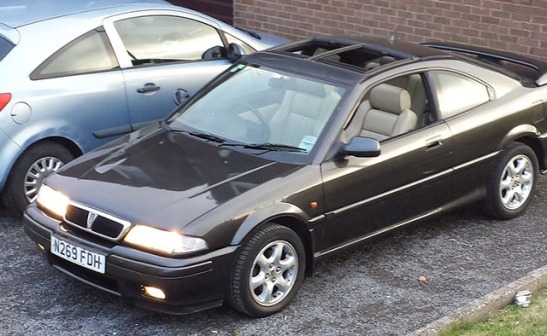
220 with a T-bar roof
Some models were fitted with an optional specially coated glass T-bar roof. When fully engaged, a metal coating in the glass would reduce sun exposure enough that a sun shade was not needed. In keeping with Rover’s English near luxury image, the interior featured some woodgrain accents that seemed out of place in a sea of black. Rover was wise to leave the ergonomics to Honda by retaining its simple straightforward dash design. Generally the interior was a comfortable place to be with well bolstered leather seats with cloth centers.
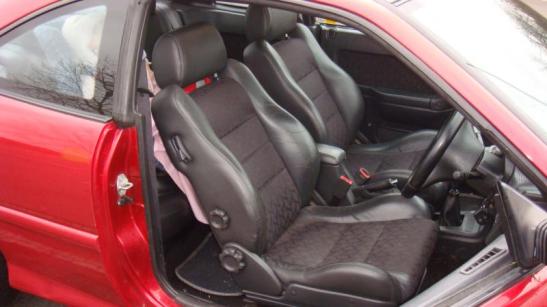
The Rover Coupe coming out of the Longbridge factory was sold all across Europe and in select Pacific markets like Japan and New Zealand. A refreshed design would see a consolidation of engine choices. Now call just the Rover Coupe, it came in 1.6 or 1.8 L in top trim with far less straight line performance (145 hp from the 1.8) than before. Many handling issues were solved with the less powerful engine resulting in a more balanced, if not exciting car.
For this reason it’s difficult to gauge complete how Europeans view the Rover Coupe today. It has a strong, but small following, mostly in England where the most were sold. From a general sampling of forums, it seems to get about as much respect as the Chevy Cobalt SS does in America. Respected by those who know, but not necessarily loved by everyone else (or anyone willing to admit they love it for whatever reason).
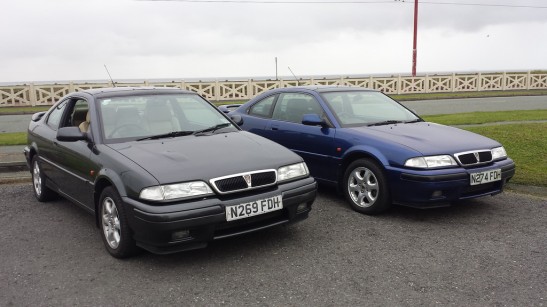
Pair of mid ’90s Coupe Turbos
About the time that refreshed version of the Rover Coupe’s production was ending, Rover was sold to BMW. Honda’s involvement continued with Rover’s extensive parts sharing and factory agreements, even as BMW had other plans for the company.
With lessons learned from Honda about quality, Rovers were finally the well made cars that could be justifiably sold for a slightly higher premium than Vauxhauls or Fords. They even gained a reputation for performance thanks to the 220 Coupe Turbo. Unfortunately, the timing of it all was bad for both Rover and Honda. Rover would be sold again to a Chinese conglomerate as it would be picked apart, only to resurface and dissolve by 2005. Honda on other hand is still trying to get a foothold in Europe.
